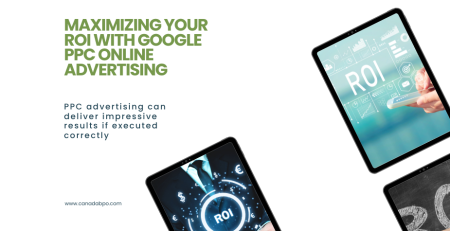Businesses face the constant challenge of attracting and engaging potential customers. Simply offering a great product or service isn’t enough—you need to generate interest, create awareness, and guide prospects through the buying journey. This is where demand generation comes into play. In this blog post, we’ll explore the concept of demand generation, its importance, and how to implement it effectively to drive growth for your business.
What is Demand Generation?
Demand generation is a holistic marketing strategy that focuses on building awareness, nurturing interest, and guiding potential customers toward making a purchase. Unlike traditional lead generation, which concentrates solely on capturing leads, demand generation encompasses every stage of the buyer’s journey—from the initial awareness of a need to the final decision to purchase.
In essence, demand generation is about creating a demand for your product or service and ensuring that your brand is top-of-mind when prospects are ready to buy.
Key Components of Demand Generation
Demand generation is a multifaceted approach that combines various marketing tactics to create a seamless journey for potential customers. Here are some key components:
- Content Marketing Content is at the heart of demand generation. High-quality, informative content helps educate your audience, address their pain points, and position your brand as a trusted solution. From blog posts and whitepapers to webinars and videos, content marketing plays a crucial role in attracting and nurturing leads.
- SEO and Organic Traffic Search engine optimization (SEO) is essential for driving organic traffic to your website. By optimizing your content for relevant keywords and ensuring your website is user-friendly, you can attract potential customers who are actively searching for solutions related to your offerings.
- Paid Advertising Paid advertising, including pay-per-click (PPC) campaigns and social media ads, is another critical component of demand generation. These tactics allow you to reach a broader audience, target specific demographics, and generate interest in your products or services.
- Social Media Marketing Social media platforms provide an excellent opportunity to engage with your audience, share valuable content, and build brand awareness. Regularly posting relevant and engaging content can help create demand and keep your brand top-of-mind for potential customers.
- Email Marketing Email marketing remains a powerful tool for nurturing leads and driving conversions. By sending targeted, personalized emails, you can keep potential customers engaged and guide them through the buying journey. Automated email workflows are particularly effective in demand generation, as they help nurture leads without requiring constant manual intervention.
- Account-Based Marketing (ABM) ABM is a demand generation tactic that focuses on targeting specific high-value accounts or customers. By tailoring your marketing efforts to the unique needs and pain points of these accounts, you can create a more personalized experience that drives higher engagement and conversions.
- Lead Nurturing and Marketing Automation Demand generation isn’t just about attracting leads—it’s also about nurturing them until they are ready to make a purchase. Marketing automation tools allow you to send timely, personalized messages to leads based on their behavior, helping you move them further down the sales funnel.
- Data and Analytics To optimize your demand generation efforts, you need to track and analyze key metrics. By monitoring website traffic, conversion rates, and engagement levels, you can identify what’s working and what needs improvement. Data-driven insights allow you to refine your strategies and maximize your marketing ROI.
The Importance of Demand Generation
Demand generation is crucial for businesses of all sizes and industries. Here’s why:
- Building Awareness Demand generation helps increase brand awareness by introducing your products or services to potential customers who may not have known about them. It’s the first step in getting your brand noticed in a crowded marketplace.
- Establishing Authority Through valuable content and thought leadership, demand generation allows you to position your brand as an authority in your industry. This builds trust with your audience, making them more likely to consider your offerings when they’re ready to make a purchase.
- Nurturing Leads Not all leads are ready to buy immediately. Demand generation helps you nurture these leads over time, keeping them engaged and moving them closer to making a decision. By providing ongoing value, you increase the likelihood of conversion when the time is right.
- Driving Consistent Growth Demand generation is a long-term strategy that drives consistent growth by keeping your sales pipeline full. Rather than relying on short-term campaigns or one-off tactics, demand generation creates a steady stream of qualified leads that can sustain your business over time.
- Aligning Marketing and Sales Demand generation aligns marketing and sales efforts by creating a seamless experience for potential customers. When marketing and sales teams work together to nurture leads and guide them through the buying journey, the result is a more cohesive strategy that drives better outcomes.
How to Implement an Effective Demand Generation Strategy
To implement a successful demand generation strategy, follow these key steps:
- Define Your Target Audience Start by clearly defining your target audience. Who are your ideal customers? What are their pain points, challenges, and goals? Understanding your audience is essential for creating content and campaigns that resonate with them.
- Develop a Content Strategy Content is the foundation of demand generation. Develop a content strategy that addresses your audience’s needs at each stage of the buyer’s journey. Create a mix of content types, including blog posts, videos, case studies, and whitepapers, to engage potential customers.
- Leverage Multiple Channels Demand generation requires a multi-channel approach. Utilize a combination of organic and paid tactics, including SEO, social media, email marketing, and paid advertising, to reach your audience wherever they are.
- Nurture Leads with Marketing Automation Implement marketing automation tools to nurture leads over time. Set up automated workflows that send personalized content based on a lead’s behavior, keeping them engaged until they’re ready to convert.
- Measure and Optimize Continuously monitor the performance of your demand generation efforts. Track key metrics such as website traffic, lead quality, and conversion rates. Use this data to optimize your campaigns and improve your ROI over time.
Demand generation is a powerful strategy that goes beyond simply capturing leads—it’s about creating awareness, building relationships, and guiding potential customers through the entire buying journey. By implementing a comprehensive demand generation strategy that includes content marketing, SEO, paid advertising, and lead nurturing, you can attract and engage your target audience, drive consistent growth, and position your brand for long-term success.
Whether you’re a startup looking to build your brand or an established business aiming to scale, demand generation should be at the core of your marketing efforts.










